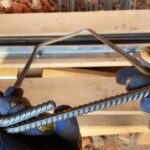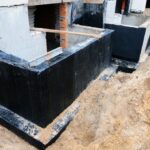Together with experts, we talk about the types of insulation for the home, as well as their strengths and weaknesses
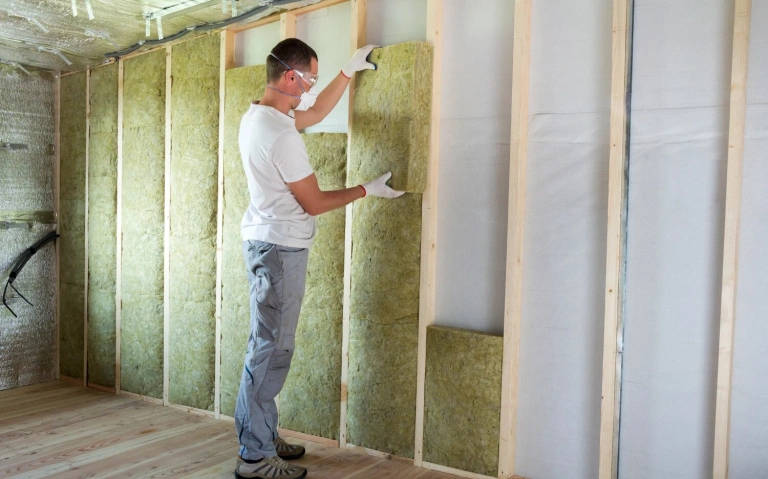
High-quality insulation of a country house allows you to maintain a comfortable microclimate both in summer and in winter cold, and also save on heating. Together with experts, we talk about the main types of insulation, the criteria for their selection, and work technology.
Why do you need insulation?
Thermal insulation not only insulates the house, making life in it comfortable at low temperatures but also prevents it from overheating in the warm season. Therefore, if the house does not have thermal insulation, it will be cold in winter and hot in summer. This fact is often overlooked by those who build a house for seasonal living. If a country house where you plan to live only in spring and summer does not have at least a minimum layer of heat-insulating material, it will be uncomfortable, explains Vyacheslav Kotlov, sales director of the construction company.
How to choose insulation
The insulation is selected according to several parameters at once. It is not worth selecting a material only for certain properties, since all layers of structures work together. If individual elements are incompatible, the service life of the entire structure may be reduced significantly, explains Yana Gerasimova, head of the service of technical representatives of the “Cottage and low-rise construction”.
Insulation functions
- Reducing heat loss.
- Reduced heating and air conditioning costs.
- Increased comfort level.
- Protection of house elements from freezing.
- Reducing the influence of frost heaving forces (in foundations and blind areas).
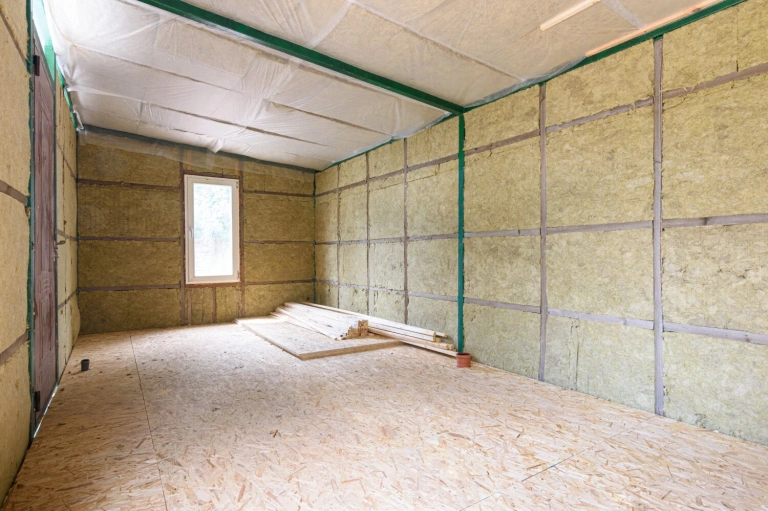
First of all, you need to understand what kind of structure is to be insulated: foundation, floor, ceiling, walls, or roof.
Selection of thermal insulation by design
Insulation for the foundation
A house always starts with a foundation, and often it also needs to be insulated. In this case, the most suitable option is extruded polystyrene foam. It does not absorb moisture, does not rot, and has high strength.
Floor insulation
In the frame floor covering of the first floor, mineral wool is most often used and, less often, backfill insulation. The floor on the ground is insulated according to the same principle as the foundation – with extruded polystyrene foam, since it is resistant to loads, and moisture and has a low thermal conductivity coefficient.
Insulation for walls
Different insulation materials may be suitable for walls – it all depends on the technology used to build the house and on the type of facade. But if it is, for example, stone wool, then it should be of increased density. To equip a ventilated façade, light grades of thermal insulation are most often used; in this case, the slabs are positioned between the posts of the frame or sheathing, explains Yana Gerasimova.
Roof insulation
Heat conservation is a serious, although not the only reason to insulate the roof. When cold air from the street comes into contact with warm air inside the room, condensation almost inevitably forms, and dampness is already a risk of mold and mildew. Therefore, the roof must be insulated with the right materials. For this task, according to experts, mineral wool, expanded clay, and ecowool are best suited.
Ceiling insulation
Insulating the ceiling in a private house will provide a thermal barrier between the room and the attic. This will prevent the heated air from cooling, heat escaping through microcracks in concrete or natural pores in a wooden ceiling, will raise the overall temperature in the room, and will also protect floors and walls from freezing. According to experts, mineral wool, expanded clay, sawdust, and small shavings, as well as eco wool are suitable for ceiling insulation.
Vyacheslav Kotlov, sales director of the construction company:
— Thermal insulation can be rolled or slab. Roll insulation materials are intended for use on horizontal surfaces. They need to be used to insulate interfloor and attic floors. They are not suitable for thermal insulation of walls, although to save money, both ordinary people and careless builders sometimes try to insulate walls with roll insulation. There is absolutely no need to do this. The fact is that roll insulation has a low density – up to 30 kg per 1 cubic meter. m. Because of this, these insulation materials may sag on vertical surfaces, resulting in the formation of cold bridges. To insulate external walls, you need to use slab insulation with a density of more than 30 kg per 1 cubic meter. m. Thermal insulation materials should also be used in interior walls. In this case, they work as sound insulation. Between rooms it will be enough to use a layer of 100 mm.

Criteria for choosing insulation
Thermal conductivity. The lower the thermal conductivity coefficient, the longer the heat will be retained in the house.
Vapor permeability. The higher the vapor permeability of the insulation, the better; the insulation will not become damp.
Hygroscopicity. The lower the hygroscopicity index, the longer the insulation will retain its thermal insulation properties.
Strength. There is compressive and bending strength. Low bending strength leads to the fact that during installation the insulation may break or crumble. Low compressive strength will lead to the fact that after installation the insulation will decrease in thickness and will retain heat less well.
Flammability class. There are the following flammability classes:
- NG – non-combustible materials;
- G1 – low-flammable materials, burn only when directly exposed to fire;
- G2 – moderately flammable materials, burn independently for about 30 seconds;
- G3 – normally flammable materials, burn for five minutes;
- G4 – highly flammable materials, burn for more than five minutes.
Main types of insulation
Mineral wool
Effective thermal insulation material. In terms of its heat-saving ability, 10 cm of mineral insulation is comparable to 44 cm of timber or 198 cm of brickwork. In addition, this material has high fire-fighting characteristics, the melting point exceeds +1000°.
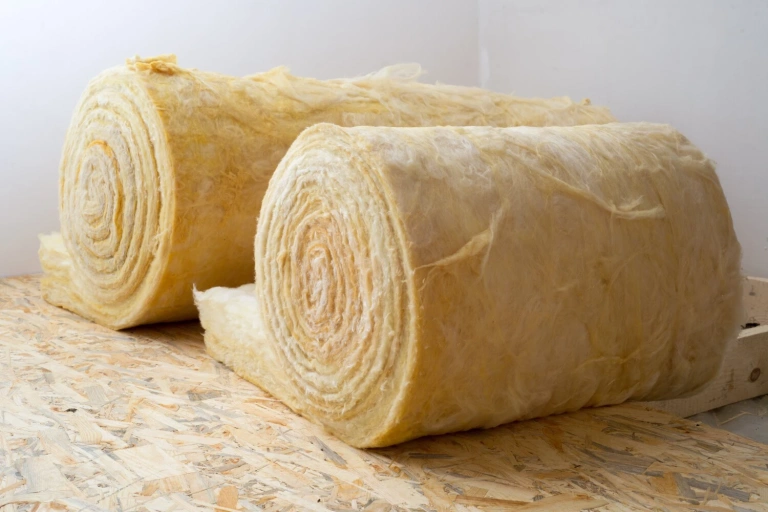
Pros of mineral wool:
- low thermal conductivity;
- fire safety, mineral wool does not burn even at a temperature of +400°;
- resistance to temperature changes, the material does not deform;
- chemical and biological stability;
- vapor permeability, due to which the material breathes;
- ease of installation.
Disadvantages of mineral wool:
- requires treatment with water-repellent agents to reduce moisture absorption;
- high cost of delivery of the material due to its heavy weight.
Glass wool
Due to its fibrous structure, it retains heat well and does not allow noise to pass through, and is also not a favorable environment for microorganisms, insects, and rodents; allows steam to pass through, preventing the greenhouse effect. The elasticity of the material allows it to be used when insulating uneven surfaces. Glass wool is used in the “pie” of walls, floors, and roofs.

Advantages of glass wool:
- the ability to cut the cotton wool as desired and place it anywhere;
- does not burn in fire, reacts poorly to high temperatures;
- good durability;
- resists bending and tearing loads well.
Cons of glass wool:
- over time it shrinks and decreases in volume;
- crumbles under mechanical stress;
- unstable to sunlight – destroyed under the influence of ultraviolet radiation;
- cannot be disposed of with other construction waste: glass wool is buried in special landfills or recycled to make a new material.
Ecowool
It is a loose mass of dry flakes. Manufacturers position the material as a universal, and most importantly, environmentally friendly means for insulating all building structures of the house. The material consists of specially processed cellulose, usually recycled paper, and an adhesive mixture with antiseptic and fire-retardant additives.

Advantages of eco wool:
- low thermal conductivity. The insulation is filled with air and ensures heat preservation;
- not flammable belongs to the second class of smoke generation;
- good sound insulation.
Cons of eco wool:
- shrinkage, characteristic mainly of vertical structures;
- low rigidity;
- decrease in thermal efficiency over time.
Basalt wool
Made based on mineral wool. Basalt rock is used as a filler, obtained by high-temperature processing of rocks. This insulation has good density, thermal conductivity, and a high melting point.

Advantages of basalt wool:
- strength, the material is perfect for facade insulation;
- fire safety. Basalt insulation does not burn or melt;
- good sound insulation, which allows you to eliminate all extraneous noise from the outside;
- resistance to deformation with increasing and decreasing temperatures.
Cons of basalt wool:
- when water gets in, the thermal insulation properties suffer;
- the space of such a room decreases;
- fragility; during installation, basalt wool should not be bent.
Polyisocyanurate foam (PIR)
PIR boards do not support combustion, do not spread flame, and can withstand mechanical loads. PIR thermal insulation is most widely used for roof insulation. Installation of the thermal insulation layer is carried out quickly, slopes are formed using wedge-shaped thermal insulation, which significantly reduces the work time.
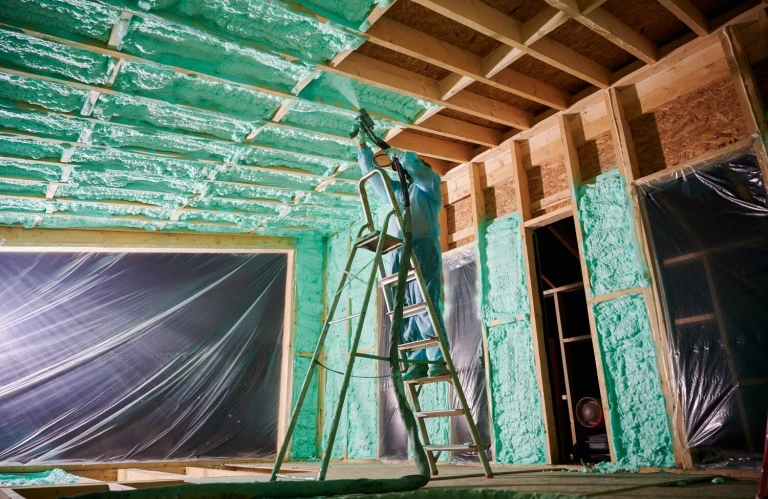
Pros of polyisocyanurate foam:
- minimum thermal conductivity;
- does not absorb moisture;
- monolithic structure provides sound insulation and thermal insulation;
- long service life;
- safe flammability class;
- no need to install fasteners.
Disadvantages of polyisocyanurate foam:
- closed pore structure, which makes it difficult for air to pass through;
- lack of vapor permeability.
Expanded polystyrene (foam)
During the production of expanded polystyrene, granules are melted, forming a homogeneous mass. Then a foaming agent is introduced into this mass, and the mass is extruded through an extruder. Thanks to this production method, closed cells of small size are obtained.

Pros of expanded polystyrene:
- high strength;
- is not afraid of moisture and is light in weight;
- interacts well with other materials.
Disadvantages of polystyrene foam:
- deteriorates in sunlight;
- high flammability;
- Only smooth walls can be insulated.
Expanded clay
They are small balls of baked clay. To obtain the desired insulation effect, it must be used in a thick layer – at least 50 cm. Due to its high frost resistance, expanded clay is used to insulate cold floors that are located above unheated basements.

Advantages of expanded clay:
- resistance to temperature changes;
- good sound insulation;
- environmental friendliness.
Disadvantages of expanded clay:
- good moisture absorption;
- fragility.
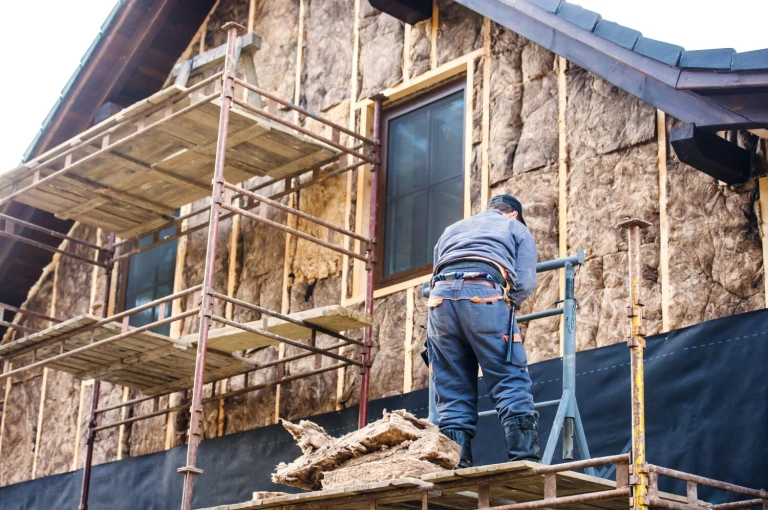
Work technologies
Stages of floor insulation:
- the old waterproofing is removed (if any), the base is cleaned with a vacuum cleaner;
- a concrete “pillow” is poured;
- after leveling, a layer of new waterproofing is applied;
- reinforcement mesh is installed.
Stages of wall insulation:
- the wall is cleaned of dust;
- a frame is mounted for the insulation system;
- wind protection is placed on the frame and waterproofing materials are attached;
- a thermal insulation frame is laid;
- sheathing is installed.
Stages of roof insulation:
- the material is adjusted to the distance between the rafters;
- a waterproofing layer is laid on the sheathing;
- insulation is installed;
- a vapor barrier is installed;
- finishing materials are attached.
Yana Gerasimova, head of the service of technical representatives of the “Cottage and low-rise construction” :
— Insulation and other elements of the thermal insulation system must be selected taking into account the design features and the region of development. It is important to correctly select and install vapor barrier, thermal insulation and windproof membrane in the required sequence. Then no problems will arise after completion of the work.

